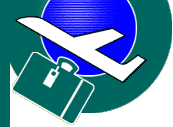|
HISTORY OF HOBBY AIRPORT
The site of William P. Hobby Airport
was acquired by the City of Houston in 1937 as its first public airport. It was formerly a private airfield owned by the W.
T. Carter Lumber Company. At that time, two airlines served the private airport: Braniff and Eastern.
Originally named "Houston Municipal
Airport," it also served as the base of operations for the earliest aviation exploits of Howard R. Hughes. A native Houstonian,
Hughes was personally responsible for several improvements to the airport, including its first control tower, built in 1938.
To honor Hughes, the name of the
airport was changed in July 1938 to "Howard Hughes Airport." But upon discovering that no federal airport improvement funds
would be granted to an airport named after a "living" person, Houston City Council reluctantly changed the name back to Houston
Municipal Airport later that year.
In the early 1940s the airport's
first field lighting system was installed and the first concrete paved runways and taxiways were completed. Shortly after
the end of World War II, four additional airlines were serving the city from Houston Municipal Airport. All city-built hangars
located at Hobby today were constructed during the ten years prior to 1947.
In 1950, Houston had its first international
flight, with Pan American Airway's scheduled flight between Houston and Mexico City. Reflecting its new status and looking
to the future, in 1954 the name of the airport was changed from Houston Municipal Airport to Houston International Airport.
Houston's scheduled airline service to Europe began in 1957 with KLM Royal Dutch Airlines' flight between Houston and Amsterdam.
Many airport facility improvements
were made in the 1950s. The old terminal was expanded, and in 1955, the present airline terminal was opened to traffic. Other
improvements included the reconstruction of Runways 17/35, 4/22 and 13/31, and installation of a high intensity approach lighting
system. Several new hangars were also constructed by private individuals at the airport.
In 1957, the first scheduled turbojet
aircraft landed at Houston International. Two years later the city found it necessary to extend Runways 4/22 and 13/31 to
7,600 feet in length in preparation for receiving jet transport aircraft. In 1961, the east wing of the present terminal building
was opened to traffic, together with the east passenger concourse and the adjacent concrete aprons. The west wing of the terminal
was expanded in 1963 to provide the additional space needed by the Federal Inspection Agencies for international passengers
arriving in Houston.
In 1967, Houston International Airport
was renamed William P. Hobby Airport in honor of the former governor. Besides his service to the state of Texas as lieutenant
governor (1914-1917) and governor (1917-1920), Hobby was president and then owner of the Houston Post newspaper. On June 8,
1969, all scheduled airline operations were moved from William P. Hobby Airport to the new Houston Intercontinental Airport
(IAH) north of the city.
The City of Houston now operated
a two-airport system. The status of Hobby Airport changed to that of a major general aviation airport. The total number of
operations at Hobby stabilized between 1969 and 1973. Between 1963 and 1977, the number of operations increased 34 percent.
While general aviation activity remained
predominant at Hobby, commercial air carriers were absent from 1969 to 1971, when Southwest Airlines initiated intrastate
service. Commercial service increased as Braniff and Texas International Airlines returned to Hobby for a limited stay. During
most of 1978, Southwest Airlines was the only major air carrier operating from Hobby. In October of 1978, the Federal Airline
Deregulation Act became effective. Many certificated air carriers who had not served the City before sought new service in
Houston. With the aid of Houston civic organizations, 12 air carriers recognized the viability of Hobby and initiated new
Houston service from that airport. |
